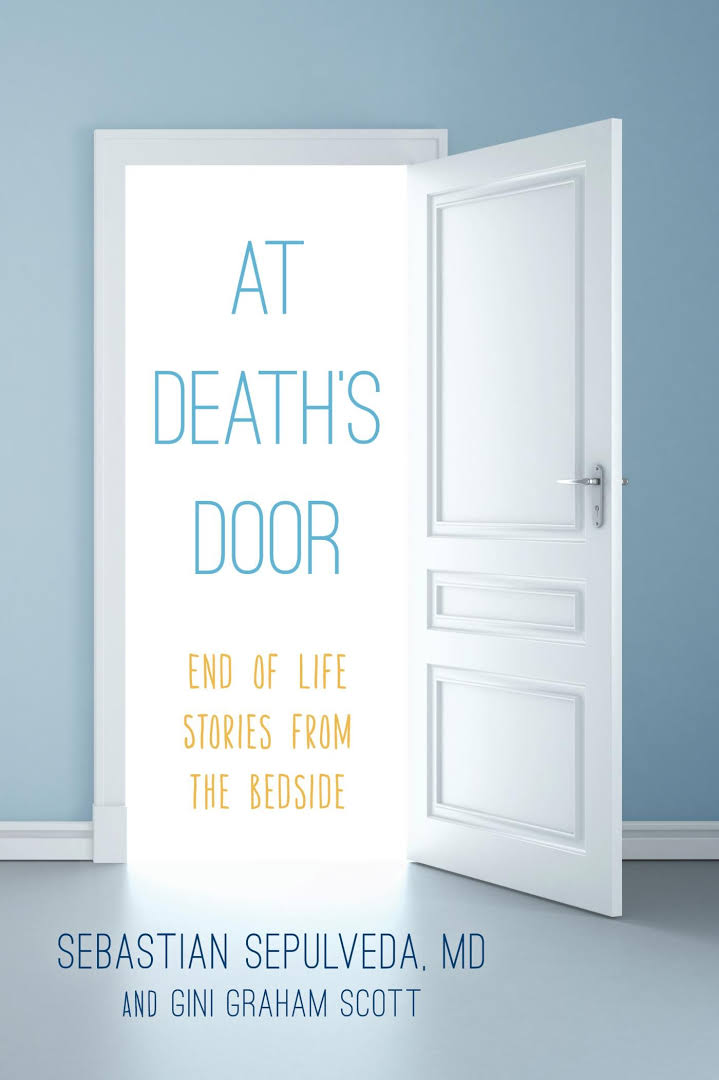At Death’s Door brings to life the end of life.
Many of us remain unaware of the important issues families face near the end of life.
- What does a DNR/DNI entail?
- What are the leading conditions that lead to irreversible decline?
- Who has the legal right to make decisions regarding our healthcare?
- What options does a person with dementia have to make decisions?
- What role does a hospitalist play at the end of life?
Authors Sebastian Sepulveda, MD and Gini Graham Scott bring to the forefront the issues doctors deal with at the end of life. At Death’s Door is a real eye opener.
 Over time, eating processed foods, smoking, drug and alcohol abuse, obesity, and a sedentary lifestyle have a cumulative irreversible effect on our bodies. An emergency admission to the hospital could lead to other complications. We could die.
Over time, eating processed foods, smoking, drug and alcohol abuse, obesity, and a sedentary lifestyle have a cumulative irreversible effect on our bodies. An emergency admission to the hospital could lead to other complications. We could die.
At Death’s Door outlines three primary conditions that lead to a terminal condition – a massive stroke that severely affects brain function, respiratory/pulmonary diseases, and cardiovascular disease. The authors distinguish between congestive heart failure, heart attack and cardiac arrest. Brain damage occurs quickly after the heart stops beating. They touch on a fourth condition that sometimes leads to a terminal diagnosis – cancer.
When we’re admitted to the hospital, a hospitalist, like Dr. Sepulveda will attend to us. This doctor coordinates care among other doctors and even handles end-of-life care.
One refrain throughout the book is the importance of making a decision about a DNR/DNI (Do Not Resuscitate/Do Not Intubate) order. While some families fear that a DNR means no further measures will be taken, the authors clarify what this means. They offer a balanced cogent discussion of the legal issues. They address the ramifications of heroic measures on a patient without a DNR who is likely to die within a day or two. They walk that fine line between reducing pain (a palliative measure) and hastening death (still illegal in many states).
While this book could easily serve as a classroom text for medical students, families who want to avoid stressful scrambling in a crisis situation at life’s end are well-advised to invest in a copy of At Death’s Door to review and keep at home. Digesting the pages will help families prepare, which will then bring them peace of mind.
It may also inspire living better. Doctors must grow tired of seeing patients return after continuing the same bad behaviors. For example, Victor in the “Alone and In Denial” chapter kept coming back for treatment while irresponsibly spreading disease. There was Jack who instead of taking steps to improve his health, kept laughing off the ill-effects of obesity.
One can’t read At Death’s Door and wonder if HIPPA laws have gone too far or have become too rigid. When a doctor cannot discuss a patient’s health with family members, the doctor may be left without an important detail. The authors relate an instance where a seemingly high-functioning lucid man consented to emergency surgery. Complications arose and the medical team then consulted the family after the patient was unable to given informed consent. The doctor learned the man was living with dementia. What legal ramifications are there when a seemingly lucid individual was later found to have dementia and therefore was not competent to give consent? Knowing our society, even more stringent measures will likely be put in place.
Religion, culture, and values often play in end of life decisions and not all family members will agree. For this reason, it’s important to prepare in advance.
Visit Amazon.com for a copy of At Death’s Door








